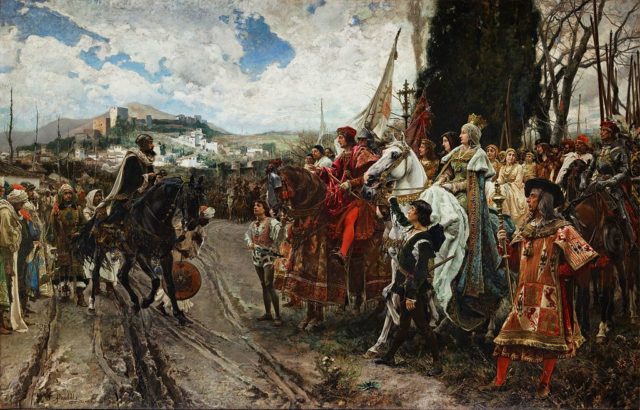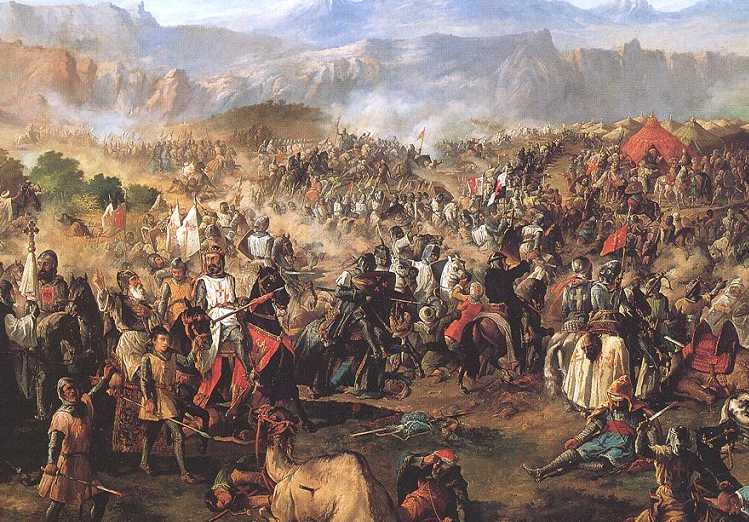The Crusade of Las Navas de Tolosa was a major turning point in the history if the Iberian Peninsula. The Crusaders won a decisive victory against the Almohad army. This battle was a Christian triumph, which would later lead to the reconquest of the entire land.
In 1212, the Caliph al-Nasir crossed the Straits of Gibraltar. Nasir’s enormous army invaded the lands of Castile, conquering city after city. The Almohad’s invasion was such a threat that all the Christian countries allied against the Muslim force. Recognizing the grave threat and forming an alliance would turn the tide in favor of the Christian Reconquista.
Prelude to the Crusade
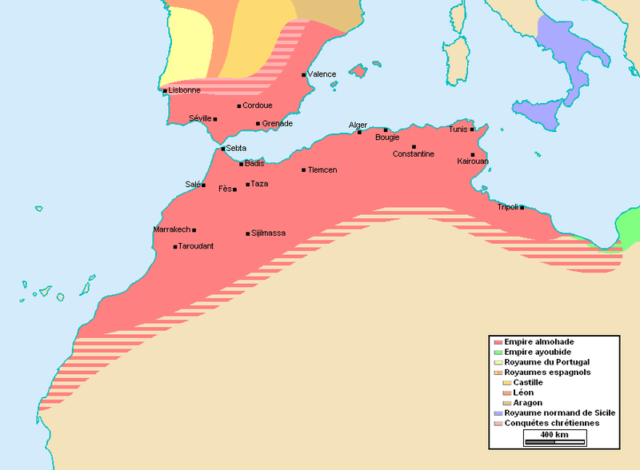
The Almohad army consisted of Muslim warriors, recruited from the Empire and the southern parts of Iberian Peninsula. The Catholic kingdoms from the peninsula were then called on for a crusade from Pope Innocent III. Although many of them were rivals, they still united. At Toledo, the Crusader army began to assemble so that it could fight off the invaders. Even volunteers from France joined the Crusade, together with the Knights of the Order of Santiago. On the 20th of June, 1212, the Crusade against the Almohad conquest began.
On their way south the Crusaders would manage to recapture several important strongholds. The Crusaders had another problem before them, but as we will see later, fortune favors the brave.
The military camp of the Almohads was on the high ground. For the defenders, it seemed the only way through was the pass of Losa, which was fortified by the enemy. There was no other way up which the defenders could take to reach the enemy, without suffering thousands of casualties in the attempt. However, miracles happen in the most desperate hours. To the aid of the Crusaders came a local shepherd. His name was Martin Halaja, and he knew one mountain pass, which almost no one had heard of.
The pass the Crusaders were to take was marked by a skull of a cow, which also gave the nickname Cabeza de Vaca (the cow’s head) to the shepherd. So, with the help of the local shepherd, the Crusader army marched all night long, through the difficult and secret mountain passage. To the amusement of the Almohad army, on the 14th of July, 1212 the Crusader army was pouring into the plateau. After 10 miles of marching towards the invaders, the Crusaders were to engage with the enemy.
At midnight, the Crusaders prepared to meet the enemy on the battlefield. They were exhorted and forgiven for the sins, blessed by the Archbishop of Toledo. Armed with their faith, the Crusaders charged into their attack. For them, it was either victory or death.
The Battle of Las Navas de Tolosa
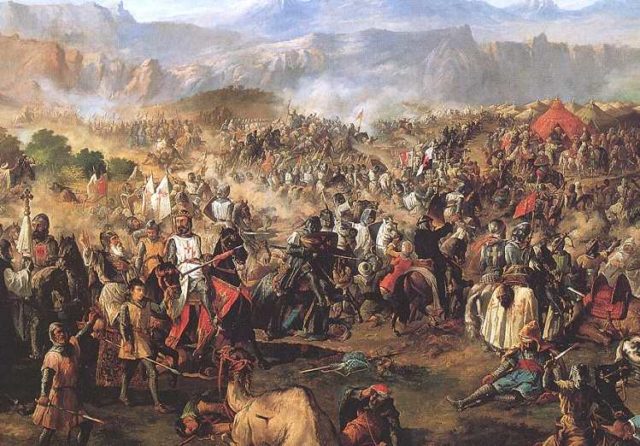
Armies
In the Almohad Army were Tunisia, Algeria, Senegal, Morocco, Mauritania, and Iberian Muslims.
The Crusader Army consisted of armies from Castile, Navarre, Portugal, Aragon, and European volunteers.
The Crusader army was about a third of the size of the Almohad force. The mere 50,000 Crusader faced an army of 125,000 invaders from the Almohad empire, according to the historical sources. The numbers are debatable, and a lot of modern historians estimate them to be 10-14,000 Iberians against 25-30,000 Almohads.
Kings, Royals, nobles and their vassals were in command of the Christian force. Among them were the notable King Alphonse VIII of Castile, King Sancho VII of Navara, and King Pedro II of Aragon.
Battle
A melee combat between the first lines of Crusaders from Castile and the Moors followed, where no one could overcome their enemy. In the continued clash, neither army could decisively push the other back. Some time later, there was chaos on the rise in the midst of the Crusaders. Some of their number fled, screaming that the battle was lost.
In that newly developed and dangerous situation, the kings of Aragon and Navarre took control of the chaos. They began a strong offensive to break the lines of the enemy. With the brave charge of King Sancho VII of Navarre and Alvar Nunez de Lara, the battle tide turned into a triumphant victory for the Crusaders.
Soon, the Crusader army managed to break the entire defensive line of the pushed back the invading force. The Caliph of the Almohads saw there were no chances of victory. Al-Nasir fled the battle in shame and disgrace.
Aftermath
The Crusaders massacred the invading army, piling up their corpses. The camp of the Almohad army was ravaged, and the battle standard of Al-Nasir sent as a trophy of victory to the Pope.
According to O’Callaghan, almost the entire Muslim force was killed on the battlefield, with minimum casualties from the Christians. Among the casualties were few of noble blood.
The Fall of the Almohads
The victory for the Crusaders was of great importance for the Spanish Reconquista. The defeat of al-Nasir’s army was a grave setback for the entire Almohad dynasty, and for their European influence. Only a few decades later the dynasty of the Almohads collapsed.
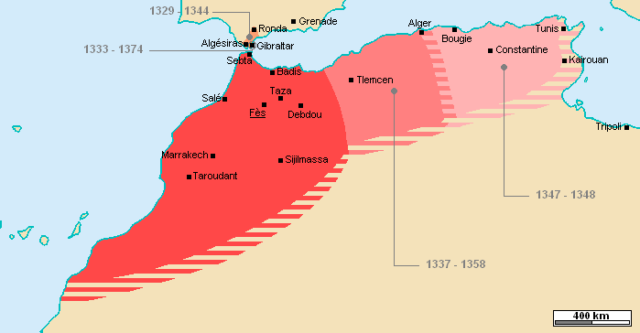
The dynasty of the Marinids, which took their place, was too weak and unable to solidify their rule and gain enough power to apply any successful expansionist policies with a permanent outcome. Neither could they defend the conquered Muslim lands of Andalusia. For a short while, they were able to control minor parts of the Iberian Peninsula but lost them in the famous Battle of Rio Salado.
The Success of the Spanish Reconquista
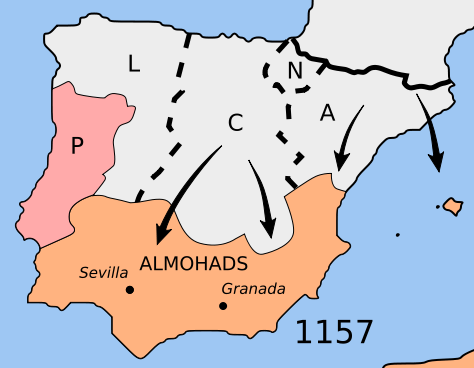
The victory of Las Navas de Tolosa opened a new page in Christian history for the Iberian Peninsula. Shortly after the battle, the gateway to Andalusia was retaken. By the middle of the 13th century, the Crusader force could set sail into the heart of the Almohad empire. However, the campaign was stopped after the death of Ferdinand III of Castile and the spreading plague. At the end of the century, King Sancho conquered Tarifa, thus obtaining control over Gibraltar. In 1492, the last of the Muslims cities on the Iberian Peninsula was reconquered.
